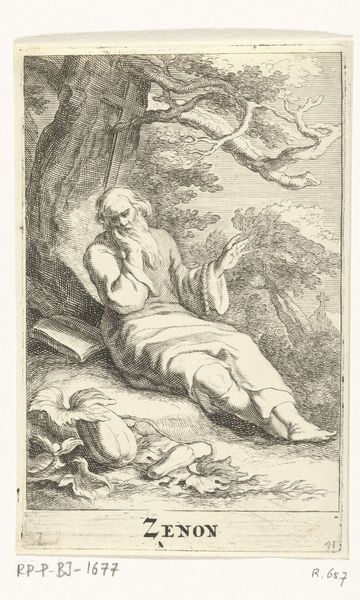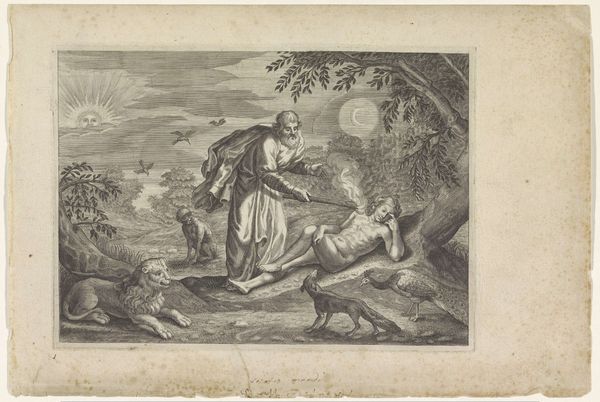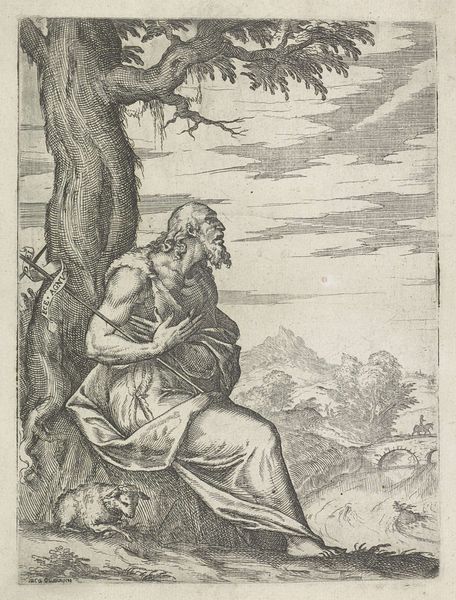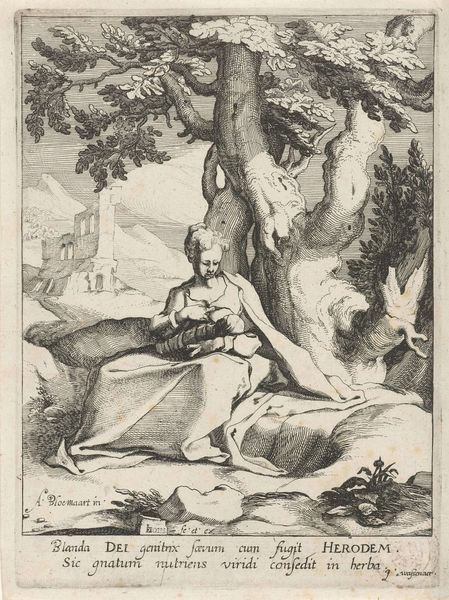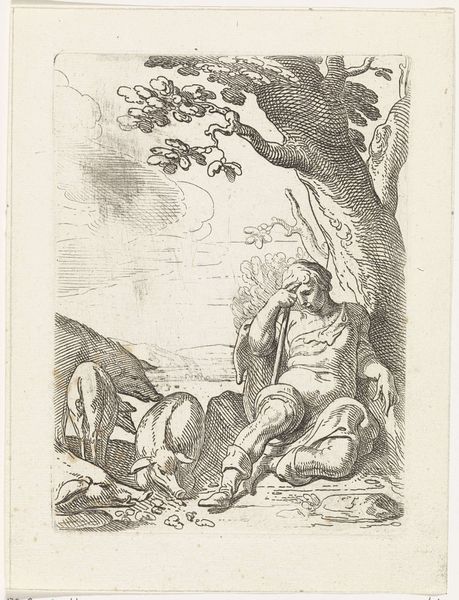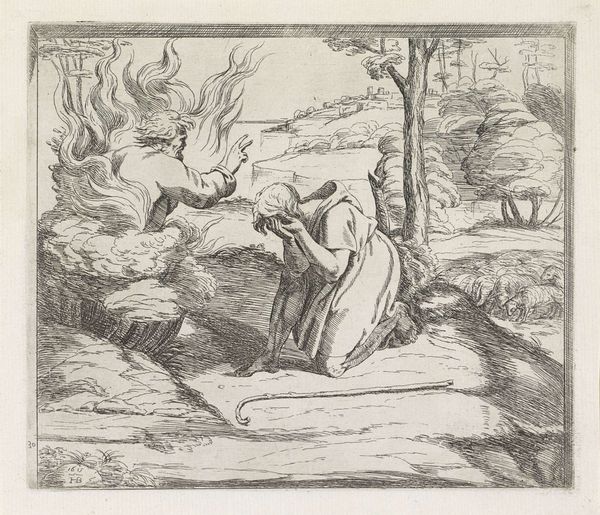
print, engraving
#
baroque
# print
#
landscape
#
figuration
#
genre-painting
#
engraving
Dimensions: height 130 mm, width 165 mm
Copyright: Rijks Museum: Open Domain
This is Frederick Bloemaert's "The Month of May", an etching made sometime in the 17th century. Etching is a printmaking process where lines are incised into a metal plate, traditionally copper, using acid. The plate is covered with a waxy, acid-resistant ground. The artist then scratches an image into the ground with a needle, exposing the metal. When the plate is immersed in acid, the exposed lines are "bitten," creating grooves. The remaining ground is removed, ink is applied to the plate, filling the etched lines, and the surface is wiped clean. Finally, damp paper is pressed against the plate, transferring the ink and creating the print. Notice how the precise, clean lines give the image its distinctive look. The process, while indirect, allows for detailed and controlled mark-making, as seen in the rendering of the figures, the tree, and the sheep. Etchings like this were relatively inexpensive to produce, making art accessible to a broader audience. This print gives us a glimpse into the daily lives of ordinary people, elevating the status of labor within artistic representation.
Comments
No comments
Be the first to comment and join the conversation on the ultimate creative platform.
